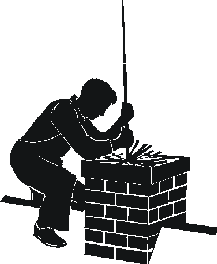
by Mike O'Mara | Jun 30, 2016 | Chimney Sweeping
Many of the national fire safety organizations like the Chimney Safety Institute of America (CSIA) and the National Fire Protection Association (NFPA) recommend that you have your chimney professionally swept and inspected before you light the first fire of the year. In order to be able to enjoy your fireplace when fall arrives, you should schedule your appointment for these chimney maintenance services in the summer. Chimney companies, including Weststar Chimney Sweeps, start getting very busy in September, and if you wait until the fall to schedule your chimney sweeping and inspection, you might have a difficult time finding a convenient date and time for the appointment. Taking care of these tasks in the summer guarantees your fireplace will be ready to use as soon as you wish in the fall. We would like to tell you why a professional chimney sweeping and inspection is so essential.
Chimney Sweeping 
The reason why it is so important to have your chimney swept before lighting the first fire of the fall is to have all of the accumulated creosote deposits removed from the inner walls of the chimney. Creosote forms naturally during the combustion process of burning wood and sticks to the inside of the flue. The problem with creosote is that it is highly flammable and can easily ignite a chimney fire if the internal temperature of the flue gets hot enough. The CSIA names creosote as a leading cause of chimney fires, so after your chimney has been swept by Weststar Chimney Sweeps, your risk of a chimney fire is greatly reduced.
Chimney Inspection
When the CSIA-certified chimney sweeps from Weststar Chimney Sweeps inspect your chimney, they will be looking for any damage or other problems that could cause your chimney to be unsafe to use. If any debris such as fallen bricks, leaves, or sticks is blocking the flue, it will be removed to reduce your risk of a chimney fire and a carbon monoxide leak. The condition of your chimney liner will be examined, and our sweeps will take a look at the exterior of your chimney to see if there are any damaged or missing bricks and mortar joints. If we find damage that needs to be repaired for your chimney to work safely, we will provide you with pictures of the damage, along with a written estimate of the repairs needed.
Beat the fall rush! Contact us at Weststar Chimney Sweeps to schedule your appointment for our professional chimney sweeping and inspection services today.
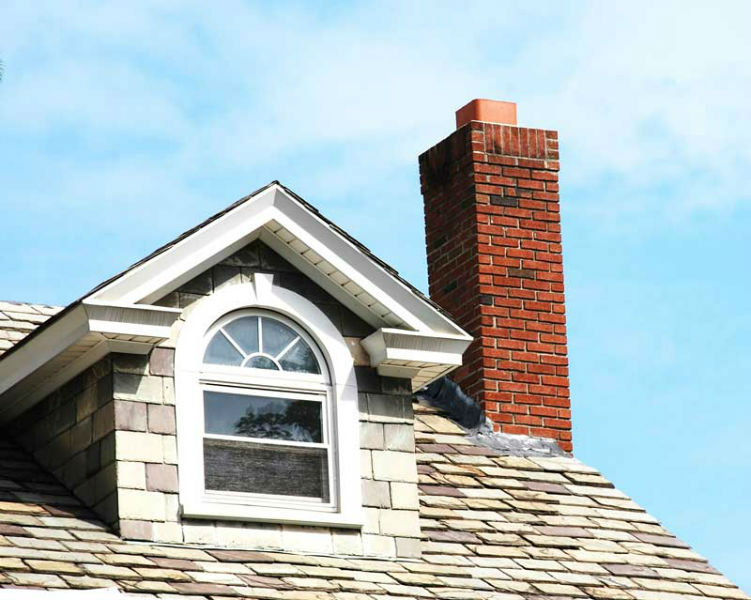
by Mike O'Mara | Jan 31, 2016 | Chimney Inspections
In order for your fireplace and chimney to work efficiently and safely, you must take care of a few routine maintenance tasks. Included in these tasks is a chimney inspection performed by a certified chimney professional. Scheduling this service at the start of the year allows you to enjoy your fireplace without worrying about potential problems all year long. Weststar Chimney Sweeps is proud to offer chimney inspection services, and you can trust our chimney technicians to do the best job possible. All of our technicians have been trained and certified by the Chimney Safety Institute of America (CSIA) to properly inspect chimneys. We would like to tell you why it is so important to have your chimney professionally inspected once a year.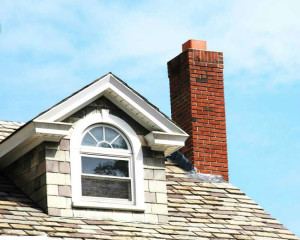
Reduce the Risk of Chimney Fires
One of the things Weststar Chimney Sweeps looks for when inspecting chimneys is the amount of creosote deposits that have accumulated on the inner walls of your chimney. A large amount of creosote can be very dangerous as it is an extremely flammable compound. The CSIA has named creosote as the leading cause of chimney fires because it can easily ignite if the internal temperature of your chimney gets hot enough. Once we know how much creosote is inside your chimney, we can then make the best preparations for removing it by sweeping your chimney.
Prevent Carbon Monoxide Poisoning
Our CSIA-certified chimney sweeps will also check to see if anything like leaves, bricks, or other debris is blocking the flue of your chimney. When your flue is blocked by debris, it can cause the toxic gas carbon monoxide to be forced back into your home. Without a carbon monoxide detector alarm, you could be breathing in carbon monoxide without even knowing it since it is odorless and tasteless. If we do find a blockage, we will remove the debris to make your chimney vent properly and safely.
Prolong the Life of Your Chimney
During our inspection, we will be looking for damage that could cause your chimney to be unsafe to use. Our CSIA-certified sweeps will closely examine the condition of the bricks and mortar of your chimney, as well as its components, including the liner and damper. If we find any type of damage, we will document it and give you photographs of the damage, along with a written inspection report. We can also make recommendations for repairing any damage we find.
Start off the new year by making sure your chimney is in its best condition. Contact us at Weststar Chimney Sweeps to schedule an appointment for our certified chimney inspection services.
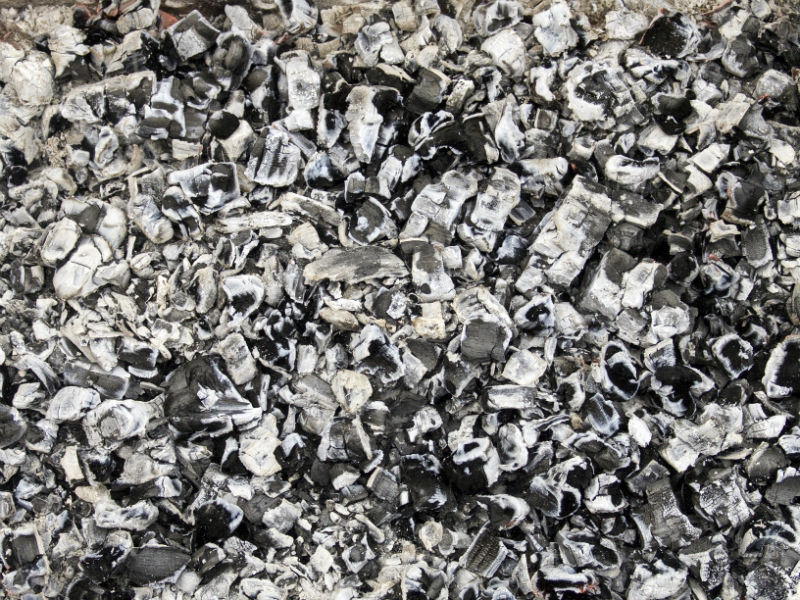
by Mike O'Mara | Jan 15, 2016 | Fireplaces
To keep your fireplace working properly, you must take care of it by performing a few routine maintenance tasks, and keeping the firebox clean is one of these tasks. When you are using your fireplace on a regular basis during the winter, you will need to remove ashes from the firebox every week or two. This task can pose a few safety issues, including accidental fires, so knowing how to dispose of ashes properly is very important. We place safety as our top priority at Weststar Chimney Sweeps, and we would like to share with you the best way of removing ashes from your firebox. Following these steps will allow you to safely remove ashes without any fire hazards.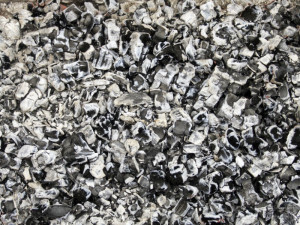
Assemble your tools.
You will need a metal ash bucket that has a lid, an ash shovel, fire resistant gloves, and a face mask if you are concerned about inhaling ashes.
Allow the ashes to cool down.
We recommend waiting at least 24 hours after the fire has been extinguished before attempting to remove ashes. Sometimes, even 24 hours is not long enough to wait as ashes can burn slowly and smolder. This is why it is so important to know the proper procedure for removing ashes.
Scoop the ashes into the metal bucket.
Open up the fireplace screen and/or doors, and place your bucket in front of the firebox opening. Use your ash shovel to scoop up the ashes and place them in the bucket. If you come across any live embers, push them to the back of the firebox and cover them with a thin layer of ashes. The Chimney Safety Institute of America (CSIA) actually recommends that you leave a one-inch layer of ashes on the firebox floor to help you build and maintain fires. This thin layer of ash can also protect the floor of your firebox.
Place the lid tightly on the bucket and store it outside of your home.
It is very important that you ensure that the lid fits tightly and completely seals the ashes inside the bucket. This will keep the ashes from spilling out if the bucket is knocked over by wind or something else accidentally. Additionally, there could be live embers or smoldering ashes within the bucket, and without a lid sealing the bucket, oxygen could reach those hot ashes to ignite a fire. It is also important to store this bucket outside on a non-combustible surface such as brick or concrete and away from dried leaves and firewood. If there are live embers or hot ashes inside the bucket, the heat could ignite anything combustible nearby.
Wait at least three days to throw your ashes away.
While you can always pour a bit of water inside the bucket to put out any live embers, it is best to wait three days before you place the ashes in your trash. If you have a garden, you can also sprinkle the ashes over your garden beds as well as work the ashes into your compost pile.
For more safety tips on maintaining your fireplace, contact us at Weststar Chimney Sweeps. We are more than happy to provide you with the best ways to safely enjoy your fireplace.
by Mike O'Mara | Mar 6, 2015 | Chimney Inspections, Chimney Maintenance, Chimney Sweeping

Schedule a chimney sweeping and inspection as part of your spring cleaning!
March is upon us, which means spring is finally here. For homeowners, the arrival of spring means it is time to get started on annual spring cleaning chores. If you have a fireplace or wood stove in your house, that means your chimney should also be included. Weststar Chimney Sweeps is ready to help you with your chimney cleaning chores, and we would like to tell you more about our chimney sweeping process.
Why should I have my chimney cleaned and inspected in the spring?
It makes sense to have your annual sweeping done in the spring because most people schedule their annual chimney inspections in the fall, so you will not have a problem getting the appointment you want. Also, the sooner you have your chimney looked at after the heating season, the better. If there are problems that need repairing, you need to get them repaired quickly so no more costly structural damage occurs. The Chimney Safety Institute of America (CSIA) recommends homeowners have their chimneys inspected annually, so why not get into the habit of scheduling this appointment in the spring?
What should I expect from a chimney sweeping and inspection from Weststar Chimney Sweeps?
When you schedule a chimney sweeping and inspection with Weststar Chimney Sweeps, one of our licensed and certified technicians will come to your home and begin the inspection and cleaning process. Using modern technology, we use video cameras to allow us to closely examine the interior of your chimney and decide which type of cleaning technique we will need to do, based on the type of creosote build-up in your chimney and what kind of chimney you have. We use a few different chimney sweeping techniques, which include:
Standard Sweeping
Using the typical rotating brushes on long handles, along with a high-powered vacuum with a HEPA filter to keep debris and soot from getting in your home, this technique is effective for getting rid of average creosote deposits; however, if you have any major creosote build-up, as in 3rd stage, you will need a heavier-duty sweeping.
Mechanical Cleaning
In order to remove hard or glazed creosote deposits, high-speed rotating wire brushes, plastic cables, or specials chains are used to do the sweeping.
Chemical Cleaning
Sometimes mechanical cleaning is not enough, and chemicals may have to be used along with the high-speed rotating power tools to get rid of big deposits of glazed creosote.
What happens after the chimney inspection and sweeping is completed?
Once we do your sweeping and inspection, we will assess our findings and determine whether or not you need any repairs done to your chimney. Other than creosote build-up, the most common damage to chimneys seen after winter is water damage from leaks. If left unrepaired, this can lead to further, more costly structural damage. Weststar Chimney Sweeps can handle all of your chimney repair needs, if repair is necessary.
Do not forget your chimney when you are spring cleaning. Contact Weststar Chimney Sweeps to make an appointment for your annual chimney sweep and inspection.
by Mike O'Mara | Sep 30, 2014 | Chimney Maintenance, fire safety

Don’t wait another day — schedule your own chimney sweeping today!
With temperatures dropping every day, winter will be here before we know it. Weststar Chimney Sweeps knows you want to start enjoying a warm fire in your fireplace as soon as you can, but we recommend your chimney be professionally swept and inspected by one of our CSIA-certified chimney sweeps before you light that first fire. According to the National Fire Prevention Association (NFPA), at least 12,000 Americans die every year in a house fire. One of the best ways to avoid having a devastating fire at your home is to have your chimney cleaned before the winter season.begins. The Chimney Safety Institute of America (CSIA), the NFPA, and other fire prevention and safety organizations recommend you have your chimney professionally swept and inspected at least once a year. Scheduling this annual sweeping and inspection in the late summer and early fall ensures your fireplace will be safe to use in the winter. We would like to tell you why it is so essential to have your chimney cleaned before you begin using it regularly in the colder months. We would also like to share some fire safety tips from the University of Nebraska-Lincoln.
Have Your Chimney Professionally Cleaned Before Winter
Safety is the main reason you should have your chimney swept and inspected before you light your first fire of the winter season. One of the biggest causes of chimney fires is large accumulations of creosote within your chimney. Developed naturally during the condensation process when the byproducts of combustion exit your chimney, creosote is highly flammable. If you neglect scheduling a professional chimney sweeping and inspection and large amounts of creosote remain inside your chimney, a home fire can be in your near future. Weststar Chimney Sweeps will be sure all creosote will be removed when we clean your chimney. We will also inspect your entire chimney to make sure there are no essential repairs. For example, a cracked chimney liner can lead to dangerous carbon monoxide leaking into your home, which can cause illness and possible death.
Other Safety Precautions for Winter
● Place some sort of shield, such as glass fireplace doors or a mesh screen, around your fireplace to keep sparks from jumping out and igniting a fire in your home.
● Make sure no flammable items are in the area around your fireplace just in case ash, sparks, or smoke exits your fireplace into your home.
● Use dry, seasoned firewood to build your fires. This type of wood cuts down on the amount of creosote produced when burning wood. Burning wet wood actually increases and speeds up the development of creosote deposits.
● Store your firewood off the ground to keep it dry and to prevent insects from living in the wood and entering your home when you bring it inside to burn. Few insects can survive if the wood is dry.
The fall is the busiest time of year for Weststar Chimney Sweeps. Contact us today to schedule an appointment with one of our chimney sweeps now so that you do not have to wait for weeks to have your pre-winter chimney cleaning and inspection.







